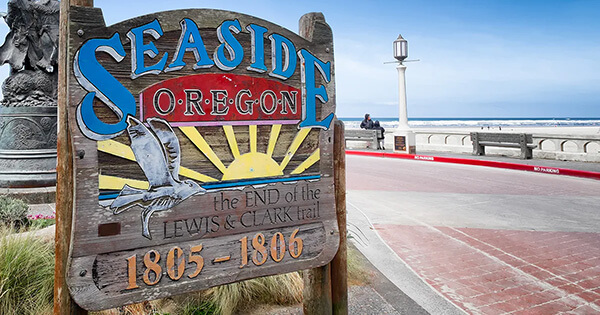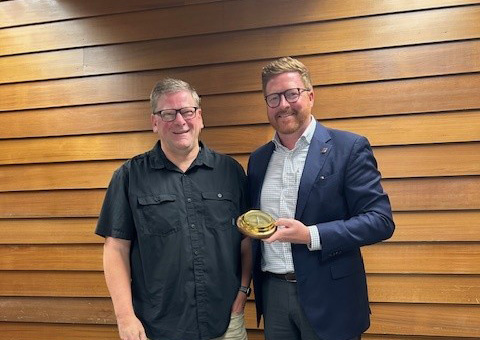How many remote meetings have you been to in the last week? Making the shift from a traditional work environment into a virtual one can be bumpy. If your port is struggling with the transition, this helpful article from MRSC on virtual work best practices might help. Everything from what video conferencing platform might meet your needs to how to conduct an online meeting is covered. You can see the original here: http://mrsc.org/Home/Stay-Informed/MRSC-Insight/April-2020-1/Engaging-in-a-Pixelated-Public-Square.aspx
Engaging in a Pixelated Public Square
April 20, 2020 by Laura Crandall
Category: Legislative Body , COVID-19
Governor Inslee’s “Stay Home – Stay Healthy” proclamation necessitated the quick adoption of remote video and teleconferencing platforms by governments across the state. This blog post looks at which video platforms are best for what use, how public comment may be made for remote public meetings, and discusses various electronic public engagement platforms. The necessary experiment of remote public meetings will likely lead to the continuing use of some of these options in the future for inclement weather and for expanded digital public engagement as the platforms and practices become more familiar.
Distinguishing Between Remote Video Platforms
This brief synopsis highlights a few commonly used platforms. Not all platforms are good for all types of meetings, and most platforms have a meeting option and a webinar option. For public meetings, webinar platforms are recommended over the meeting option because you will have the best control over the meeting environment and presentation. This blog covers a few example platforms that are preferred for public meetings and three that are better for internal meetings.
Both examples for public meetings offer mobile apps and have audio-only options for constituents to listen in. For more information on authority and practices for remote attendance at public meetings, see this blog post: http://mrsc.org/Home/Stay-Informed/MRSC-Insight/February-2020/Remote-Meeting-Attendance-guidelines.aspx
For public meetings
See this linked PDF for more details on these platforms.
GoToWebinar offers the most control over your meeting. There is no group chat option, which is an effective way to avoid Open Public Meetings Act (OPMA) issues, but viewers can type in questions to the presenter, which offers one way to handle public comments. A call-in option, automatic recording and transcription, and mobile app are also available. Prices range from $49 – $199 per month, per host, and GoToMeeting is included.
Cisco WebEx offers the same basic features as GoToWebinar, but it is slightly more expensive and requires attendees to install a plug-in. Prices range from $13.50 – $26.95 per host, per month.
Zoom Webinar. Note that this is not Zoom Meetings, which has security issues. Zoom webinar is simpler for users to learn than the previous two options, but it requires a way to stream the meeting to the public, such as your local 21 channel or YouTube. Pricing starts at $40.00 per month, per host.
Regardless of which platforms you decide to use, here are a few tips to keep in mind:
• Video uses a lot of bandwidth: Do your residents and councilmembers have sufficient internet access and bandwidth? It’s always a good idea to test all systems in advance.
• Run your meeting as if participants and the public have audio-only. Use roll call voice votes and have the clerk announce the tally and results. Restate each motion and name the councilmember who made it.
• Have two co-hosts, preferably on different internet connections, in case service is lost.
• Always make sure there is an audio-only option that anyone can call in to. The best access for council meetings is a simple dial in, without the need for a meeting ID.
• All of these platforms are seeing an unprecedented increase in use, and some are compressing video, which reduces the quality. Again, consider your use of video, especially if using Zoom backgrounds. Blurring backgrounds is a better option than applied backgrounds and uses less bandwidth.
• In view of OPMA restrictions, don’t use chat features under any circumstances during your public meetings.
Best practices for Zoom and WebEx were developed by WATech, the Washington State Office of Cybersecurity. Take a look at their main COVID-19 Resources page for more information about meeting security and cybersecurity for the home work environment.
For those jurisdictions seeking audio-only conferencing, you will find it available from FreeConference.com.
For internal/staff meetings
These options are recommended for internal and/or staff meetings but not public meetings.
Zoom Meeting is popular for public meetings right now, but it has security issues that could result in your meeting being taken over by objectionable content unless the meeting is password-protected. Because this can create ease of access issues for viewers, Zoom Meeting is better for staff meetings since they can be password-protected without concerns about OPMA issues. A basic subscription is free but other offerings include Pro ($14.99/mo) or Business ($19.99/mo) levels.
Microsoft Teams requires a subscription to Office 365 (cost varies). Developed for internal communication, it can be used for project teams, departments, or any type of group. It has video conferencing, file sharing, group and individual chat, and a phone app.
Google Hangout is good for small internal meetings of up to 25 attendees. It offers multiple-user document creation and editing in real time. Free in the U.S. and Canada.
Public Comment Options for Virtual Public Meetings
One of the biggest challenges in moving to virtual meetings has been how to take public comment. There are a few methods out there, and local governments are using a combination of the following:
• Invite public comment via email. Have a cut-off time for receiving emailed comment prior to the meeting.
• Give residents a number to leave voicemails and broadcast these during the meeting.
• Accept comments via text.
• Have voicemails and/or written comments read by a staffer at the appropriate time, keeping to the established time limits.
• Limit public comment to action items only.
The City of Burien has multiple ways for residents to make public comment, which can be accessed via information on its website. Some councils are including a link to public comment procedures on their agendas. Here is an example of Spokane Valley’s procedure.
Looking and Sounding Your Best
Local governments should form guidelines and agreements about how public meetings will proceed. Here are council guidelines, staff guidelines, and public guidelines from Burien.
Here are additional quick tips for holding a more successful public meeting:
• Make sure your display photo and screen name are professional: include your full first and last name, followed by your position.
• Decide how microphone/muting will be handled. Will councilmembers control their own microphones or will the clerk activate them for council discussion and staff input?
• Have each speaker introduce themselves when they speak. Visual cues are imperfect or not accessible in video/teleconferencing public meetings, and most members of the public will not be able to recognize a speaker’s voice. It may seem redundant, but speakers should introduce themselves every time they speak so it is clear for participants and for the record, at least for the first few times they speak in the meeting.
• Employ roll-call voice voting. Some councils are doing voice-vote only, and the clearest way to record the vote is to do roll-call voice voting.
• Do at least one practice session.
The Spokane Valley City Council’s online meeting is shown in the image below. Councilmembers are using both voice votes and visual votes by holding up a card to indicate their vote during the ‘aye’ or ‘nay’. The city came up with this method as a way to make sure there was no uncertainty as to whether people were voting for or against a matter.
Public Engagement Platforms
See this linked PDF for details on these platforms.
Public meetings aside, as city halls remain closed to the public the need for public input and engagement increases. Web-based and app-based engagement platforms have the benefit of being open all hours so residents can engage when it’s convenient for them. The downside to these types of engagement is that it may make it more difficult for marginalized or underrepresented residents to engage on these platforms. They’re a good addition to a larger communication strategy for engagement and input that should include ‘old technology’ like paper surveys, charettes, etc.
Resources
NASCIO.org offers COVID-19 Planning for State CIO’s for local government IT professionals, and the Alliance for Innovation is offering Virtualizing Local Government, a series of live webcasts in which government professionals describe their approach to management from remote sites, often within an emergency context.
Additional guidance on accessible meetings can be found through the following:
• Making Meetings Accessible from the Centers for Disease Control and Prevention, which includes guidance on making audio, video, and onsite meetings more accessible, and
• the California Association of Public Information Officers’ worksheet for communicating with those that have access or functional needs, with accessibility features noted in the overview of platforms.
Special thanks to City of Burien staff Megan Gregor, City Clerk, and Fernando Llamas, IS Manager, for their contributions to this blog.
________________________________________
MRSC is a private nonprofit organization serving local governments in Washington State. Eligible government agencies in Washington State may use our free, one-on-one Ask MRSC service to get answers to legal, policy, or financial questions.





